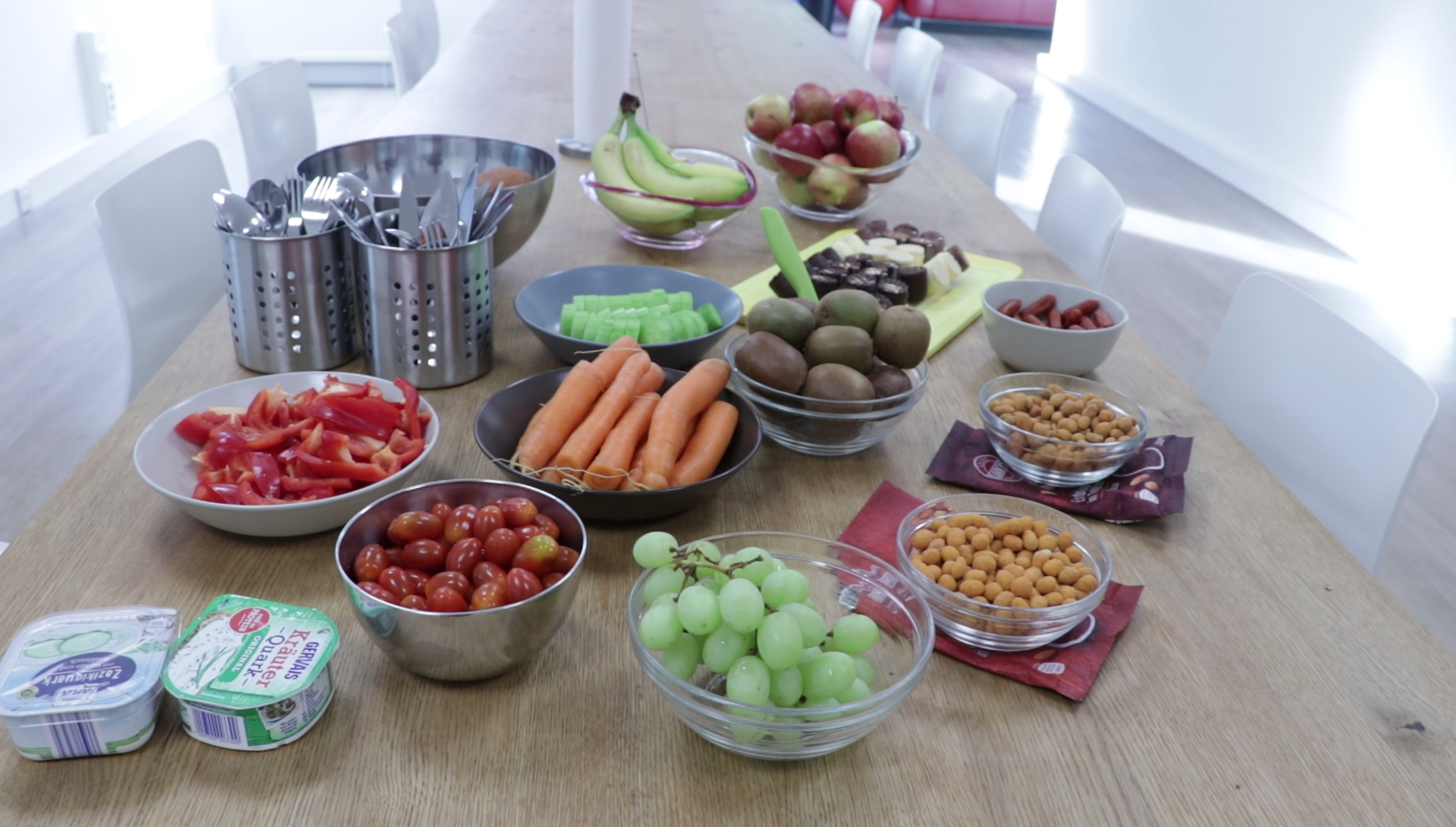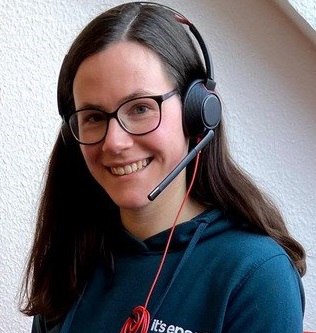We’ve already explained in our previous blog posts how agile working at ePages looks like, e.g. how Scrum is used at ePages, what it’s like to be an agile technical writer, or how to introduce new employees to Scrum. But have you ever wondered how the daily work of a Scrum Master looks like and which challenges they face? Yes? Me too. 🙋🏻♀️ That’s why I decided to do an interview with one of our Scrum Masters from Jena.
Moin Miri, thank you for taking the time for this interview. Let’s start with your journey to ePages: What’s your background and your job position?
Hi, I started in November 2019 as a Scrum Master at ePages. In order to tell you how I became a Scrum Master, and how I became an ePagee, I need to go into a little more detail.
I did my master’s degree in Intercultural Human Resources Development and Communications Management in Jena. The studies included various topics: from digital work to agile work, and New Work in combination with psychological concepts. Originally, my plan was to work in the field of Human Resources Development. Due to a lucky coincidence during my internship at an ecommerce software company, I ended up in the field of Scrum where I worked together with the Scrum Masters. In this internship I got a deeper insight into Scrum and agile work which I really liked.
What are your tasks and how many teams do you support?
My task area is very diverse. A big part of my work is collaborating with the Scrum teams. Currently, I’m supporting two teams in Jena. But these teams also include team members who work remotely from Bratislava and Leipzig. My aim is to ensure that my teams can work undisturbed in a harmonic environment without any conflicts. If there are any conflicts, I adress them, and solve them as fast as possible.
Team development is a big task as well, which includes organizing and hosting e.g. the Daily Scrum or Retrospectives. There are some important aspects I have to consider as a Scrum Master: listen to the team, meet their needs, and building trust within the teams. But my work is not only limited to working with the Scrum teams. The Scrum Master’s objective is to encourage team work also across different teams and locations. Our task is for example to coordinate that the teams work in alignment with each other, to handle communication barriers, to avoid miscommunications between the individual teams, and to support the teams in order to work better together.
We do not only work with the RnD teams, but also with other teams like Product Management, Marketing, HR, and Sales in order to develop new team processes. Thus, we would like to ensure that the whole company moves into the same direction.
Could you tell us how your typical work day looks like?
Actually, each day as a Scrum Master is different. You never know what the day will bring you. So, there’s no typical work day, and that’s what I like a lot about my job. But I will try to explain how my “typical” work day looks like.
-
Morning: My day starts at 7.30 a.m. at ePages. First, I get a coffee and try to exchange with other colleagues in the kitchen to keep me updated. Then, I return to my desk to check my emails and messages. Afterwards, I prioritize my tasks for the day to get a better overview. At 9.15 a.m. we have our Scrum Master’s Daily Scrum where I exchange with the other Scrum Master from Hamburg, for example about ongoing topics in the teams. Half an hour later I have the Daily Scrum with my teams. After the Daily Scrum and before my lunch break, I try to work on my tasks which I prioritized in the morning.
-
Lunch time: I usually spend my lunch break together with the team. Sometimes we meet in our social room to eat together, or go outside to have lunch. On other days we even cook together. For example, this week I will prepare Kaiserschmarrn (since I am originally from Austria) for the whole team.
- Afternoon: The afternoon often differs, depending on if we have a Sprint change or not. If we have a Sprint change, I spend most of the day with meetings (e.g. Sprint Review, Retrospective, and Sprint Planning). Otherwise, I work on organizational development tasks, or on cross-team tasks.
What is one of the biggest challenges of your job, and how do you handle it?
One challenge for me at the moment is working together with teams that actually do something completely different than I do. Since I am relatively new in this technical field, my level of knowledge in tech is not that deep, yet. Part of my job is to intervene in team discussions, if the discussions get out of hand. Sometimes it’s not that easy for me to determine when I should step in: Is the technical topic the team is discussing really relevant for them, or is it just a random tech topic? Of course it would be easier for me if they would talk about a topic that I do understand at least a bit. What I do to handle such situations is to ask the team directly what the topic is about, and if it is important for us. But compared to the beginning, I now understand much more - step by step.
How do you cooperate with your Scrum Master colleagues from Hamburg? Are you in regular exchange with them?
Yes I’m in regular exchange with the Scrum Masters in Hamburg. We have a remote Daily Scrum each morning. This meeting is especially for me very important, because I’m the remote person. Since I’m not directly in Hamburg, I don’t get all important information right away. This makes it so much more important to stay in touch with the Scrum Masters in Hamburg. The Daily Scrum helps us all a lot to keep us updated.
Furthermore, the Scrum Masters in Hamburg have a board where they collect important and current topics they discussed about. Once or twice a week we’re meeting remotely and work on the collected topics together. And if there are any questions from my side, I can call them at any time. The cooperation works very well.
Do you have a favorite Retrospective?
Actually, I do not have that one favorite Retrospective. But one Retro I liked a lot is one which took place outside when all team members were in Jena, including the members who work remotely. And in order to connect them a little better, we took a walk together to the Fuchsturm Jena (a castle tower), and had lunch. We did the retro on our way to the restaurant and on our way back from the restaurant. The team was split into several smaller groups. Each group got some questions which they had to discuss in their group, to get to know each other better. During the walk the groups changed. In the end each team member had to tell us what they’ve learned. On the one hand, it was a cool retro because we were outside, and catched some fresh air. On the other hand, it especially improved the relationship of the team members who work remotely.



